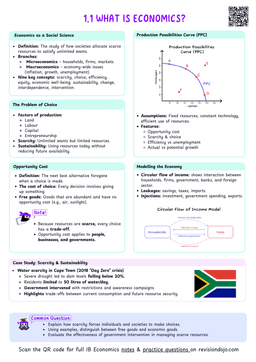At market equilibrium, both consumers and producers are satisfied and have no tendency to change their choices, unless there is a change in some non-price determinant.

Consider the market for some good $X$ (Figure 1). At first, it is in equilibrium at point $A$ with price $P_e$ and quantity $Q_e$.
Shifts in Demand
Now assume that there is a change in some non-price determinant, such as an increase in the price of a substitute of good $X$:
- This will cause the demand for good $X$ to increase, shifting the curve to the right from $D_1$ to $D_2$ (Figure 2).
- Hence, at the current price $P_e$, there is an excess demand from point $B$ to $A$ because the new quantity demanded $Q_1$ is higher than the quantity supplied $Q_e$ .
- Thus (as we was in 2.3.1), the firm will increase its price until $P_1$ causing a new equilibrium point to be found at $C$ with quantity $Q_2$.

Similarly, now assume that there is the opposite effect through a non-price determinant, such as the discovery of good $X$'s harmful health effects (negative preferences and tastes):
- This will cause the demand for good $X$ to decrease, shifting the curve to the left from $D_1$ to $D_2$.
- Hence, at the current price $P_e$, there is an excess supply (surplus) from point $B$ to $A$ because the new quantity demanded $Q_1$ is lower than the quantity supplied $Q_e$.
- Thus (2.3.1), the firm will decrease its price until $P_1$ causing a new equilibrium point to be found at $C$ with quantity $Q_2$.




